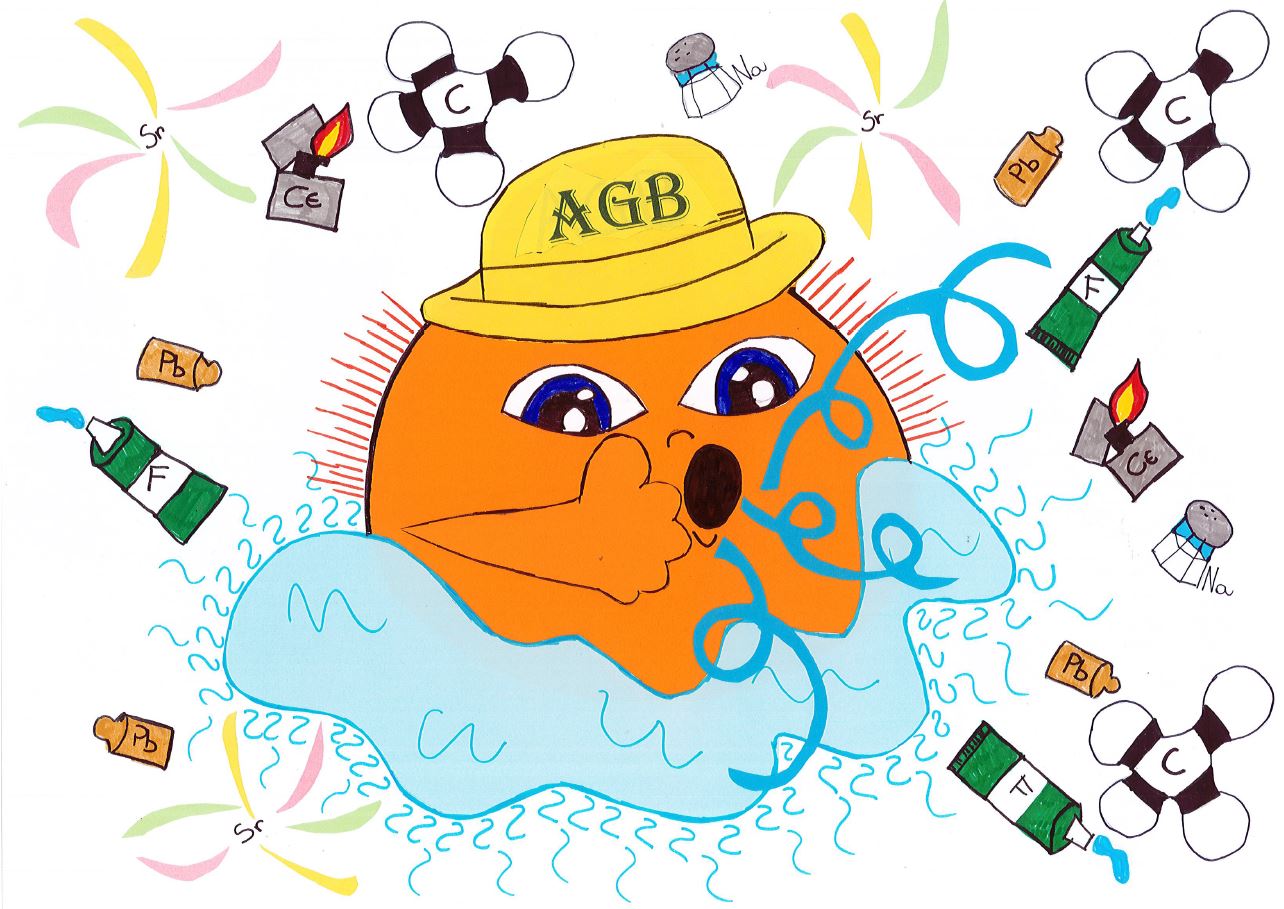2019: INTERNATIONAL YEAR OF THE PERIODIC TABLE
by Sergio Cristallo
The Asymptotic Giant Branch (AGB) evolutionary
phase is reached by stellar
objects that do not have enough mass to trigger the series of thermonuclear burnings leading to iron
production.
AGB stars look like enormous onions, since their structure is layered. The core, made of
carbon and oxygen
(the ashes of previous helium burning), is surrounded by a stellar shell in which
helium burns and, more externally, by another thin shell in which
hydrogen burns. The structure, then, is wrapped by a cool and expanded
convective envelope, whose dimensions are enormous
(the stellar core it's like a nut in a 100 meters hot air balloon!!!). Those stars are extremely luminous
(10000 times the Sun) and rather cool (the surface temperature is around 3000 K, to be compared with the
5500 K of the solar surface). A so low external temperature allows the formation of
complex molecules, which in turn merge in larger structures, forming
dust grains (some millionths of meter sized).
AGB stars are the most efficient dust producers in the Universe. Those grains interact with the light
from the central star and gain momentum, dragging with them the stellar gas.
This process is at the origin of the mass-loss phenomenon in AGB stars, which are among the most important
chemical polluter of interstellar medium. Many of the elements formed in
their interiors, thus, is re-distributed in the space (this process is ideally represented in
Figure 10).
Figure 10: A SCHEMATIC REPRESENTATION OF AN AGB STAR

One of the most important product of AGB stars is carbon: the majority of
the carbon in the Universe is thought to come from these stellar objects. Besides carbon,
those stars produce many other light elements, as
nitrogen (the main component of Earth atmosphere),
fluorine (an essential ingredient of toothpaste)
or sodium (can you imagine to live without salt?).
Not to mention heavy elements: without those stars we would not have lead,
an element used by humans since more than 3000 years, or less known elements as
strontium (without which kids could not appreciate a night fireworks show).
